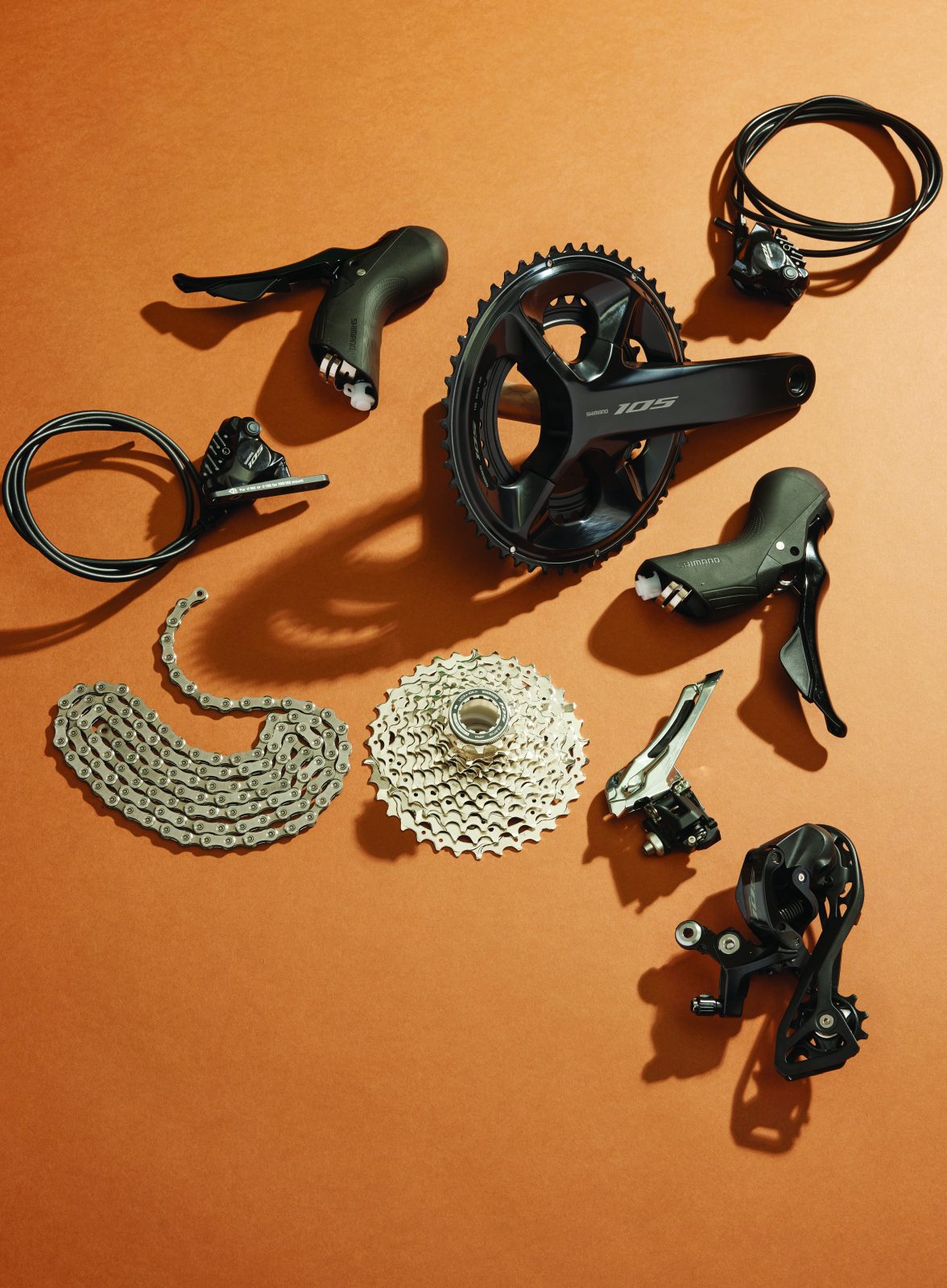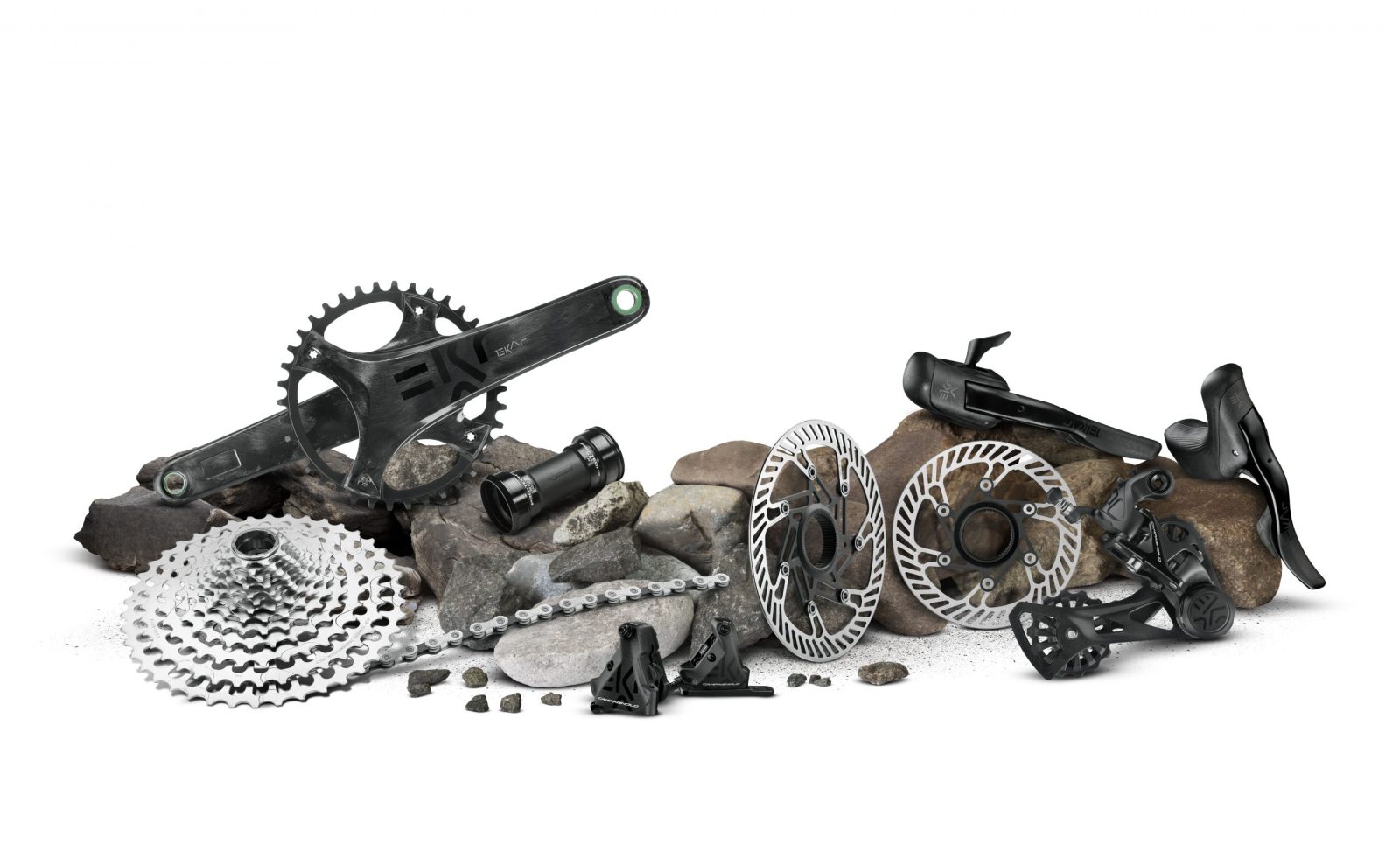It seems like riders and manufacturers are in a perpetual drive to trim weight from their bikes. But are the performance gains really worth the effort and cost?
What is it about people when they see a new bike that makes them unable to resist the urge to lift it up? They’ll weigh it in one hand and nod, as though this simple test has told them all they need to know about the bike’s quality. No one ever tries to flex the frame or measure the tube angles. The only thing that matters – to the uninitiated, at least – is weight.
Weight has long been the currency of high-end cycling – the lightest bikes and components are considered the best. But there’s been a recent shift to other performance factors, threatening the sacred position of weight in the equation. Road riders are starting to see why time-trialists have traditionally favoured aerodynamics over weight. For example, Mark Cavendish’s green jersey-winning Venge was a full 850g north of the UCI weight restriction, at 7.65kg – the weight of an entire extra frame. Meanwhile, with the introduction of electronic shifting, the best groupsets on the market are no longer the lightest, with some lumping half a kilo on top of mechanical groupsets at similar price points. So, with that in mind, the question is looming – what is a gram actually worth?
Not much, apparently. That’s according to the physicists and component manufacturers that Cyclist talked to and, more surprisingly, the creator of the world’s lightest performance production bike, Cervélo.
‘On flat ground, weight doesn’t make a big difference to your speed,’ says Cervélo’s most senior engineer Damon Rinard. ‘In terms of factors that affect performance, aero wins over weight nearly every time. When you’re going uphill you’re lifting weight against the force of gravity, whereas downhill weight helps you. But on level ground at a steady speed it’s almost neutral, so adding or reducing weight doesn’t make a significant difference.’
He’s not alone in that view. Scientists covering the area of cycling seem to unanimously play down the importance of weight. Jim Papadopoulos, co-author
of Bicycling Science, says, ‘According to the best physics, we know if you’re on a level at a steady speed, having already achieved that speed, then there’s a slight,
slight penalty of weight due to rolling resistance.’
Rolling resistance is the resistive effect of the various forces of stretching and compressing that occur to the wheel and tyres while in motion. But it’s not a hugely significant force, Papadopoulos says: ‘On a bumpy road things are considerably worse, but on a smooth paved road the total rolling resistance for a 70kg person would be only 3.5N. So a 0.5kg weight saving on that would make a 0.02N difference in opposing forces.’ That’s the equivalent of a fraction of a watt of power difference.
If you believe the science, weight has little effect when riding at constant speed on level ground. Clearly, though, that leaves significant parts of cycling out: accelerating, climbing and descending. But you may be shocked how minimal the benefits of weight saving are here, too.
Acceleration and weight are linked together by the laws of physics. That’s down to Newton’s second law of motion: acceleration is equal to net force divided by mass. In simple terms, that means the total force you apply above the force of drag and friction, divided by how much you and your bike weigh, will determine how quickly you get up to speed. But that still relies on you overcoming aerodynamic drag, because the less drag you have the more acceleration you will achieve. So it’s obvious that a 2% saving in weight will make far less than 2% improvement in terms of acceleration or climbing speed.
Weighty issues
The acceleration and weight issue becomes a little more complex when rotation comes into the equation. Cyclists commonly preach that weight on the wheels has a larger effect on acceleration than weight on the frame, and they’re not wrong. Physicist Andy Ruina is an expert on the forces affecting a bike, and specifically the gyroscopic effect of wheels. ‘If you look at a point on the outer part of the wheel, it’s actually travelling twice as fast as the bike is,’ he says. ‘That’s not cancelled out by movement in the opposite direction, so that weight acts differently because on average it moves twice as quickly in the direction of movement, so it takes twice as much force to get it going and it makes the bike slow down twice as much.’
Importantly that means the quickest moving part of the wheel – the outer circumference – is where the effect of weight is most magnified. So light rims will (in theory) have a greater effect on acceleration than light hubs.
Darren Snyder, Bontrager’s wheel expert, argues that with wheels it’s not as simple as ‘lighter is better’, though: ‘If you’re on a perfectly flat course, rotational mass is less of a factor because it’s like a flywheel, and once you get up to speed and maintain that speed it can be beneficial in helping you maintain that inertia. So to make a blanket statement to say that one is better than the other is definitely a slippery slope.’
The role of weight on the wheel does become more important when it comes to climbing, Snyder says: ‘Because you’re overcoming gravity, as you’re climbing you have to constantly keep accelerating the bike uphill. If you stop, your momentum is going to go own very quickly. Air resistance is a constant force, whereas gravity is an accelerating force – they’re two different force vectors.’
So lighter wheels are better for climbing than a lighter frame but, in general, how much benefit does losing weight from your bike give you when the tarmac tilts skywards? Will the money you spent on lightweight pedals and carbon bottle cages see you sprinting up the slopes like Contador?
Disappointingly, no. The retarding force of gravity is only small in comparison to other factors that fight movement. According to Papadopoulos, on a 16% climb the force of gravity would render only 1.6N of extra downward force from a 1kg increase in weight. At 18kmh, that means that shedding a kilo of weight from your bike would gain you only eight watts of power on the hill.
Now, eight watts could be the difference between a winner and an also-ran at pro level, so it’s not to be dismissed, but it does beg the question why weight is seen as so vital – more so than other factors such as stiffness or aerodynamics – especially when a climb is only ever likely to be one part of a ride.
Why, when they know the truth, do bike and component manufacturers continue the struggle to produce ever lighter models and parts?

Market forces
‘Striving to shave grams off frames across the industry isn’t so much to do with performance as it is to with the demands of the market,’ says Rinard of Cervélo. ‘If we were making aircraft or rockets or military vehicles then they would all be aero, but not all our customers have in mind specifications justified by science, many have in mind the bikes that they want to buy.’
Cervélo is the innovator of the world’s lightest production frameset, the R5ca, which emerged from a super-top-secret-sounding engineering exercise called Project California. According to Rinard, the Project California frame was not made for sales: ‘In fact, we didn’t think we would ever sell anything out of that lab. The whole purpose of Project California was to explore the boundaries; an engineer’s playground – what can we do? What are the limits? What are the possibilities? Naturally to confirm the maths and the theory we had to make the bike lighter. We made bikes and we thought they were pretty good, and since we already had the moulds, we thought we might as well make a few more and offer them for sale.
‘The challenge for Project California for the R5ca was to maximise our structural capabilities, and if you’re a very good structural engineer you can reduce the amount of material and still keep or improve a bike’s performance – stiffness, light weight, high strength – so structurally the stiffness to weight ratio is an excellent measure of the excellence of the structural engineer. When working with carbon, knowing which plies in which orientations to take out and which to leave in place is a really good exercise,’ Rinard adds.
We might expect groupset manufacturers to be a bit more defensive over the value of a gram in their painstakingly-crafted chainrings and sprockets. Apparently not. Scott McLaughlin, SRAM’s global director of drivetrain development, says, ‘Weight is certainly a performance factor, but it has a higher decision-making priority to a lot of customers than its performance benefit would justify.
‘You read on some of these forums what people are doing. I think it’s just completely crazy. The weight savings should be in pursuit of higher performance,’ he says. ‘But if you end up with carbon fibre chainrings that don’t shift unless you let off 99% of your pedalling power, or you end up with an extremely flexible frameset, you’re not improving overall performance, you’re just optimising weight.’
McLaughlin points out the difference between weight savings in different parts of the bike: ‘Anything that rotates is going to be more important than anything that doesn’t rotate, because it’s not only the mass that you have to carry uphill with you, or accelerate linearly, but also the centripetal acceleration – the energy it takes to get something rotating – is also significant. Obviously that plays a much stronger role in the tyre or the rim than it does in something like the crank arm. But suppose if you look at the crank arm versus the brake, the crank arm would be at least a little bit more important because the crank arm is rotating and the brake isn’t.’ That said, saving 30g on the crank arm will at most be equal to saving 60g in your water bottle, or on your body, which could well prove a cheaper alternative.
Don’t get heavy, man
So it seems that many manufacturers create light bikes and components mainly because that is what the market demands. People feel good about having the lightest, highest-performing parts on their bikes, and will pay handsomely for the privilege. But if they really cared about going faster, they might look to their own weight before shaving grams from their steed.
Specific strategies with hydration and food can alter your weight on any given day by a perceptible kilogram or two. Team Sky nutritionist Nigel Mitchell employs several approaches to hitting bodyweight targets on the day of competition, without sacrificing energy levels or hydration. ‘In principle it’s quite simple,’ he says, ‘because what you want is the riders to have the appropriate muscle mass so they are able to produce the required power, but at the same time you want them not to carry any unnecessary weight or fat.’
Mitchell explains that his nutrition approach largely falls in line with the science of weight in cycling: ‘If you’ve got riders who are riding predominantly flat
races such as the Classics, they don’t have to be quite as light as the riders on the Tour de France, because they’re not going up big mountains.’
One of the main weights in your body is water, which can be removed fairly easily. But, of course, that can have its own potential hazards. Mitchell says, ‘The problem is that you can easily take a couple of kilos off with dehydration, but where people are racing in temperatures of 30° plus they might become too dehydrated and prone to heat exhaustion and that will compromise performance. So, to the contrary, we ensure that riders are very well hydrated on those stages.’
Making sure you don’t over-supply yourself with water, though, can be a huge benefit to performance. ‘What you can do is estimate roughly what people’s sweat rates are and try to work on a drinking strategy to maintain normal hydration,’ Mitchell says. ‘We’ve got a good idea about how much athletes sweat by measuring weights before and after training and seeing how much water has been lost. For the average rider, preparing for a sportive, what you can do very simply is set up the turbo trainer in the kitchen or conservatory, get the heat to 24° or however hot it’s likely to be when you race, weigh yourself before and after and measure how much weight you’ve dropped. From that you can work out your sweat rate in those conditions.’
Food, Mitchell says, is also a potent area for weight reduction. ‘When we get to the mountain stages the foods become a lot simpler and they’re easier to digest, so in effect they’re passing through the system more quickly. We move onto a lot more rice and chicken, we don’t have so much red meat, we cut down the amount of vegetables and replace them with more vegetable juice.’ Although a small change, it can make a big difference if it saves you from carrying 500g of undigested food in your gut. How much would you pay to remove 500g from your bike?
Don’t diss the weight weenies
Having studied the science, it appears riders who obsess over the weight of their bikes are fooling themselves – that the advantages are massively out of proportion to the costs. But we shouldn’t be too quick to judge.
Rinard at Cervélo admits that he still takes weight into account when he’s creating a new frame: ‘I respect that, and we’re that way here. We’re weight obsessives in our design, even when it comes to a matter of grams.’ His point is that low weight, while not a significant performance factor in its own right, can be an indicator of high quality. A light frame, groupset or wheel has most likely been thought about more carefully and tested more rigorously than a heavy one, so will often be a better piece of equipment.
Equally, textbook thinking might downplay the significance of weight, but you’d struggle to find a rider who has upgraded to lighter parts and not felt a marked improvement in feel and speed. It may be psychological, but science has not yet had the final word on weight.
Papadopoulos concedes, ‘This is a question that has troubled me for many years, because everyone is so excited on a light bike, you think it makes you perform better – maybe it really does. So I’ve been struggling with the question, might weight have a bigger influence than we think? That’s the one rule of science – you never say never.’
The physics of science
This simple equation should make everything clear

As anyone can see from the equation above, the physics of cycling is fairly straightforward. OK, we haven’t got a clue what it means either, but apparently it shows that weight is not all that significant for performance. Damon Rinard of Cervélo explains, ‘In the early 1980s a bunch of engineers and scientists modelled all the forces on a rider. The “P” is expressed in watts generated by the rider while everything to the right of the equals sign are the forces that oppose a rider’s movement – rolling resistance, gravity, drag, chain friction and things like that. Engineers can measure those forces individually and add up those forces that a rider has to overcome.’ If you’re really keen to put it to use, all you need to know is that ‘m’ is mass, ‘a’ is air, ‘g’ is ground, ‘Crr’ is the coeffieient of rolling resistance and ‘G’ is gradient. The rest is up to you.


